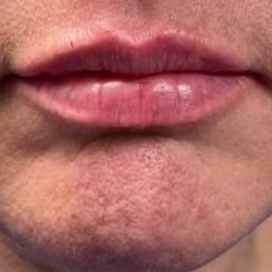If you’re exploring non-surgical ways to refresh your appearance, you’ve probably come across Botox® and dermal fillers. Both treatments are incredibly popular, minimally invasive, and can produce beautiful, natural-looking results when administered by experienced professionals. At Premier Surgical Plastic Surgery in Knoxville, TN, we offer both Botox® and dermal fillers as part of our customized approach to facial rejuvenation. While these treatments are often mentioned together, they serve very different purposes—and understanding those differences can help you make the right decision for your face and your goals. In fact, many patients choose to combine Botox® and fillers for a more comprehensive, balanced result.
Here are eight key differences between Botox® and dermal fillers, and why you don’t necessarily have to choose just one.
1. Purpose: Muscle Relaxation vs. Volume Restoration
Botox® (as well as Dysport®, another neuromodulator we offer) is designed to relax the facial muscles that cause dynamic wrinkles—those formed from repeated facial expressions like frowning, squinting, or raising your eyebrows. It smooths these expression lines and helps prevent them from deepening over time.
Dermal fillers, on the other hand, are used to restore lost volume, enhance facial contours, and soften deeper creases. They’re especially effective for plumping the lips, lifting the cheeks, and filling in areas that have started to look hollow due to aging.
2. Target Areas
Botox® is typically used in the upper third of the face, such as:
- Forehead lines
- Frown lines between the eyebrows (the “11s”)
- Crow’s feet around the eyes
Dermal fillers are more commonly used in the lower two-thirds of the face, including:
- Nasolabial folds (smile lines)
- Marionette lines (lines from the corners of the mouth down to the chin)
- Cheeks, lips, jawline, temples, and under-eye hollows
3. How They Work
Botox® is a neuromodulator made from a purified protein that temporarily blocks nerve signals to the targeted muscle, causing it to relax. This smooths out the overlying skin.
Fillers are gel-like substances—most commonly hyaluronic acid, but also including Poly-L-lactic acid, calcium hydroxylapatite, and Polymethylmethacrylate (PMMA)—that are injected beneath the skin to restore volume, provide structural support, and smooth out lines and creases. The type of filler we recommend will depend on your specific concerns, treatment area, and aesthetic goals.
4. Speed of Results
Botox® results are not immediate. Most people begin to see improvement in 3–5 days, with full results appearing in about two weeks.
With dermal fillers, results are typically visible immediately after treatment, although there may be some initial swelling that resolves within a few days.
5. Duration of Results
Botox® generally lasts about 3 to 4 months, though results may last longer with consistent treatments over time.
The longevity of dermal fillers depends on the type of substance used and the area being treated. Most hyaluronic acid fillers last between 6 to 18 months. Other fillers, such as those made with Poly-L-lactic acid, calcium hydroxylapatite, or PMMA, can provide longer-lasting results—sometimes up to two years or more—depending on the individual and the treatment plan.
6. Treatment Time and Downtime
Both Botox® and fillers are quick, in-office procedures, often taking 30 minutes or less. Most patients return to their normal routines right away.
Botox® has virtually no downtime. With fillers, you may experience mild swelling, redness, or bruising at the injection site, but these side effects are usually short-lived and easily managed.
7. Reversibility
Botox® cannot be reversed, but its effects naturally wear off within a few months, making it a temporary treatment.
Hyaluronic acid fillers have the advantage of reversibility. If you’re not satisfied with your results or experience any issues, they can be safely dissolved using an enzyme called hyaluronidase. Other fillers, including Poly-L-lactic acid, calcium hydroxylapatite, and PMMA, are not reversible, but they are biocompatible and either gradually absorbed by the body or designed to provide longer-lasting structural support, depending on the formulation and treatment area.
Can You Get Both? Absolutely.
Many patients achieve the most balanced, youthful results by combining both Botox® and dermal fillers. This approach allows for a more comprehensive treatment: Botox® smooths dynamic wrinkles caused by muscle movement, while fillers restore volume and enhance facial contours. When used together, they can provide a subtle, refreshed look—without surgery or downtime.
Every face is unique, and so is every treatment plan. During your consultation, our experienced Nnurse Practitioner injector, Caity Savage, FNP, will assess your facial anatomy, skin condition, and personal goals to help you decide whether Botox®, dermal fillers, or a combination of both will work best for you. Our goal is always natural-looking, confidence-boosting results that help you look like the best version of yourself.
At Premier Surgical Plastic Surgery in Knoxville, we are dedicated to providing patients with the highest quality care and service. To request complimentary skin and laser appointment, call (865) 306-5680 or book online.




